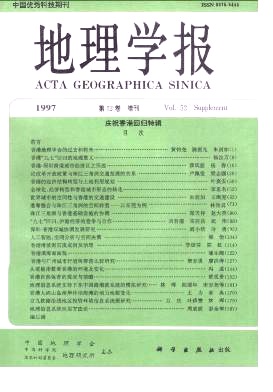Du Debin, Xu Jiangang
With a technique of GIS and a method of multiple linear regression analysis, the spatial distribution of Shanghai land values and its relationship with some location factors are examined in this paper. The data base of land values consists of 166 land parcels leased during 1993-1994. The land value map of constructed from 155 sample land lots shows that the spatial distribution of Shanghai land values has some distinct spatial features. First, the highest land value areas are located along Nanjin Road, Huaihai Road and Bund. From these high land value areas there is sharp decline in all directions except in two regional shopping centers, Xujiahui and Yuyuan. Secondly, there is no conspiculus perk land value intersection within the CBD, which locates within Middle Xizang Road, East Beijing Road, Bund ad East Jinling Road. Finally, the land values of Pudong are much lower than that of Puxi and there is a sharp drop along Puangpu River on the land value isogram map. The multiple regression model between Shanghai land values and selected location factors calculated from the sample land lots is as fellow:Y=734.98-21.66X1-36.34X2-27.42X3-4.61X4-1.71X5+0.18X6where Y is the land value at any location, X1 is the distance of a land lot to the center of Shanghai (Renmin Square), X2 to Nanjin Road, X3 to Huaihai Road,X4 to Bund, X5 to major outlying regional shopping centers, X6 to some major transportation nodes. Three unimportant variables, X4 , X5 and X6, being rejected, the model is simplified as:Y=732.09-28.70X1-35.16X2-25.17X3 The above two models indicate that Nanjin Road is the First important location factor affecting the spatial distribution of Shanghai land value, the city center is the second one and Huaihai Road is the third one. Bund, the regional shopping centers and the transportation nodes have little influence on the spatial distribution of Shanghai land values. The relationship between shanghai land values and the selected location factors is determined by the distribution of commercial activities, the characteristics of the CBD and the spatial form of the city. Nanjing Road and Huaihai Road, both of which stretch more than 5 kilometers, are traditional commercial ribbons and are more and more concentrated with various commercial activities especially after large scale redevelopment in recent years. In addition, there are many other commercial streets, such as Middle Xizang Road, East Beijing Road, East Jinlin Road, Middle Henan Road, in the central area of the city. The great concentration of commercial activities in the central area, especially along Nanjing Road and Huaihai Road, results in a steep rise of the land values. So Nanjing Road, the city center and Huaihai Road become the most improtant location factors affecting the distribution of Shanghai land values. Compared with the central area, the concentration of the outer areas of the city is very low. So the regional shopping centers and the transportation nodes nearly have no affection on the land values. Although Bund is an important sightseeing area and is becoming a major financial street of Shanghai it has little influence on the spatial distribution of land values of the whole city because of its location on the east side of city and adjacent to the low land value area of Pudong Bund.
